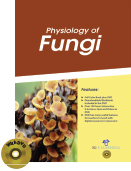Agriculture and Life Sciences

Fungi are living organisms that are distantly related to plants, and more closely related to animals, but rather di erent from either of those groups. Kingdom Fungi includes mushrooms, rusts, smuts, pu balls, tru es, morels, molds, and yeasts, and thousands of other organisms and microorganisms. Fungi grow best where there is a rich supply of organic matter. Most fungi are saprobic (obtaining nutrients from dead organic matter). Since they lack photosynthetic pigments, fungi cannot perform photosynthesis and must obtain their nutrients from preformed organic matter. They are therefore chemoheterotrophic organisms. Fungi reproduce sexually or asexually, or both, depending upon the species and the environmental conditions. As the name implies, sexual reproduction is the result of the union of two spores. Most fungi reproduce both sexually and asexually. Asexual reproduction occurs in the fungi when spores form by mitosis. These spores can be conidia, sporangiospores, arthrospores (fragments of hyphae), or chlamydospores (spores with thick walls). Fungal spores are important in the identi cation of the fungus, since the spores are unique in shape, color, and size. A single spore is capable of germinating and reestablishing the entire mycelium. Spores are also the method for spreading fungi in the environment.
Fungi grow well under the same conditions that favor the growth of bacteria--warmth and moisture. It is for this reason that fungal infections pose a serious problem to troops in the tropics. As the temperature decreases, fungal activity also decreases; however, the spores are very resistant to cold, some surviving freezing temperatures for long periods of time. On the other hand, fungi are easily killed at high temperatures.